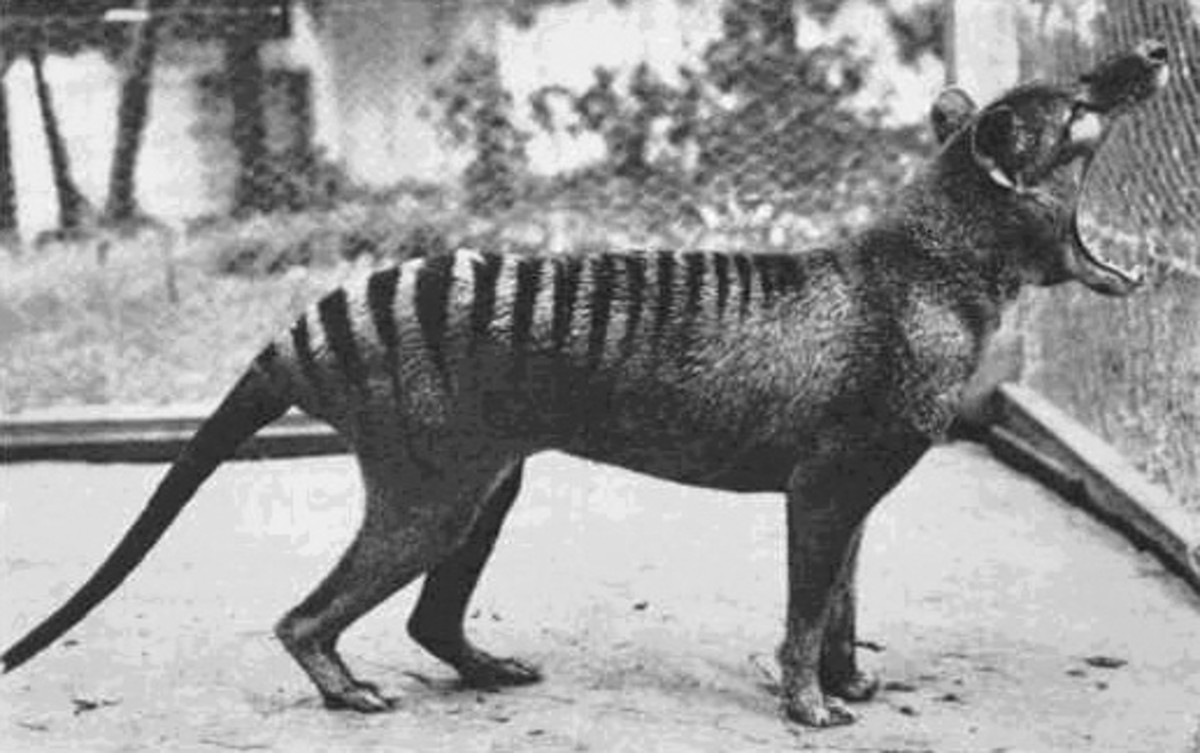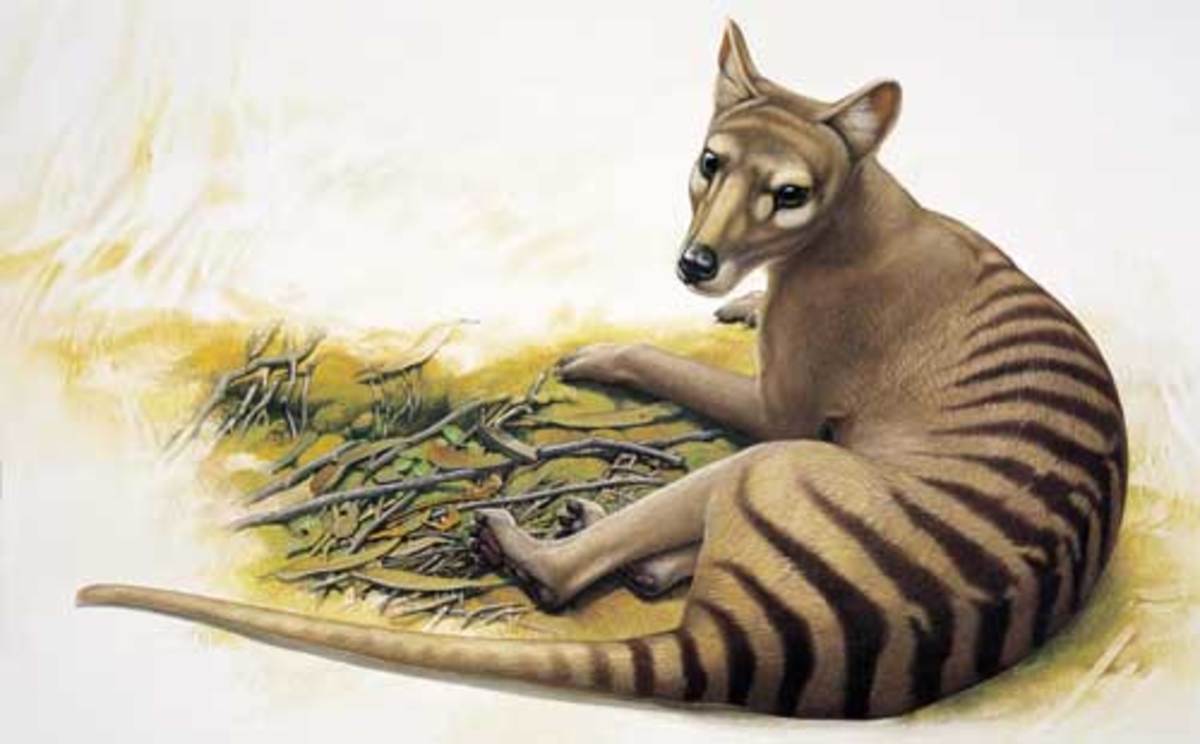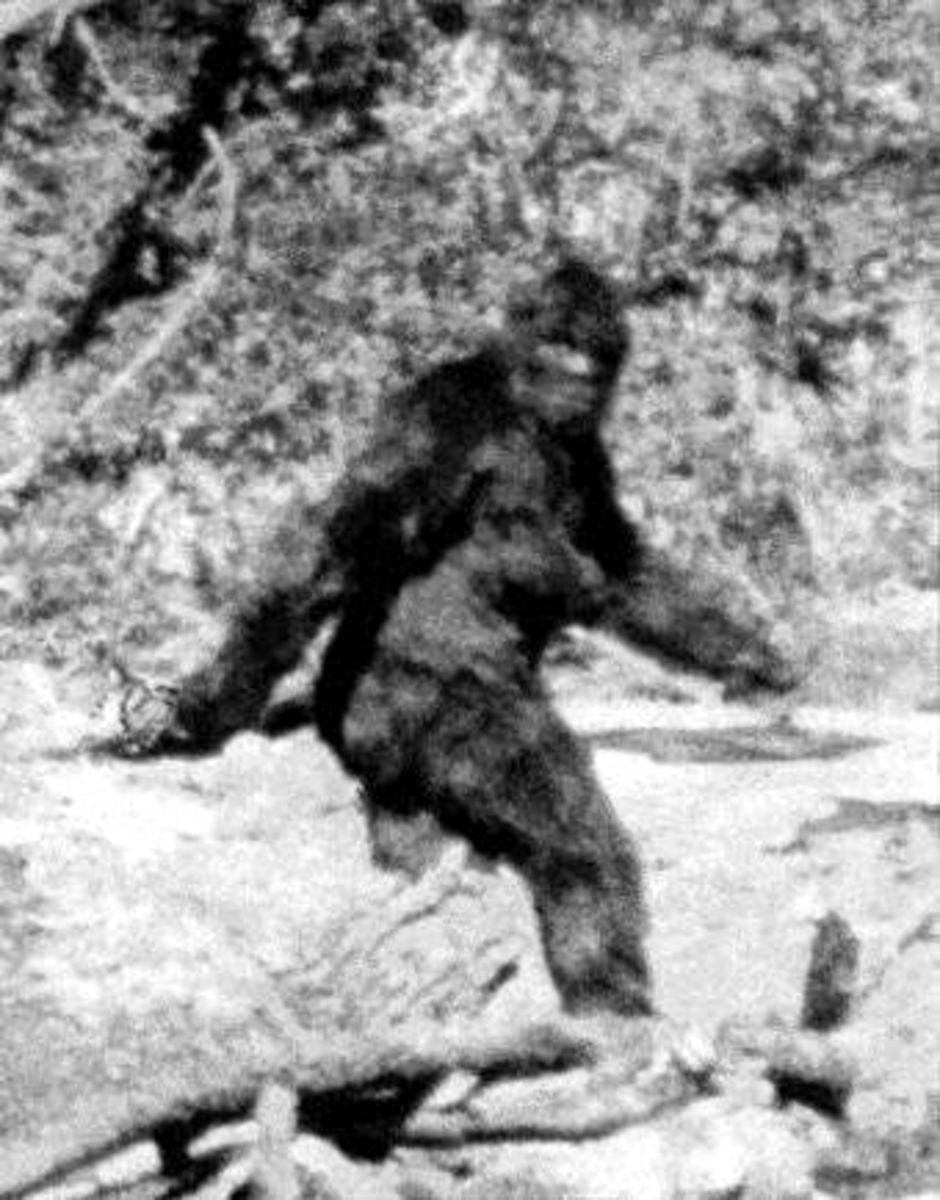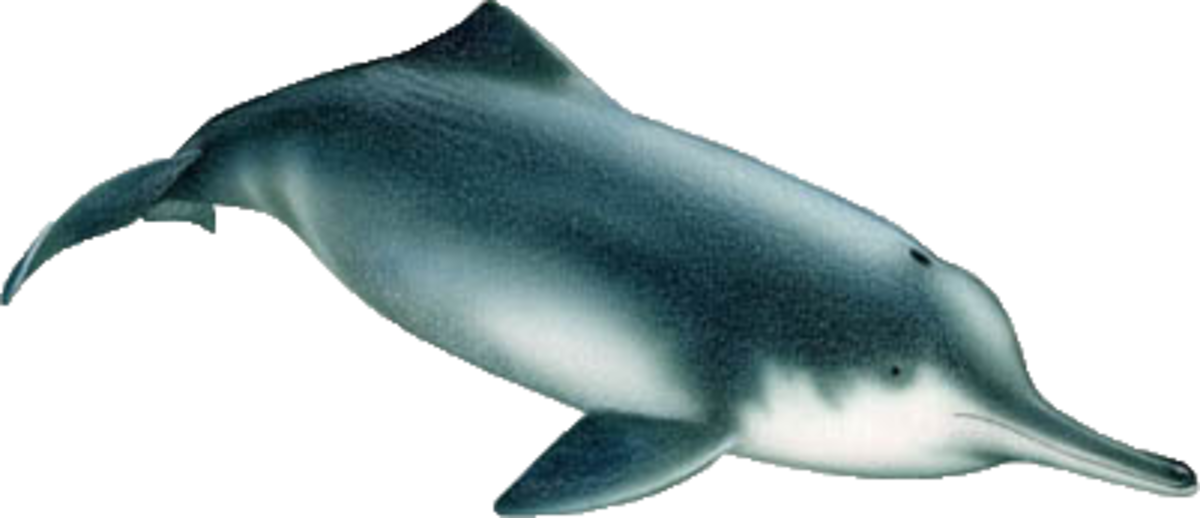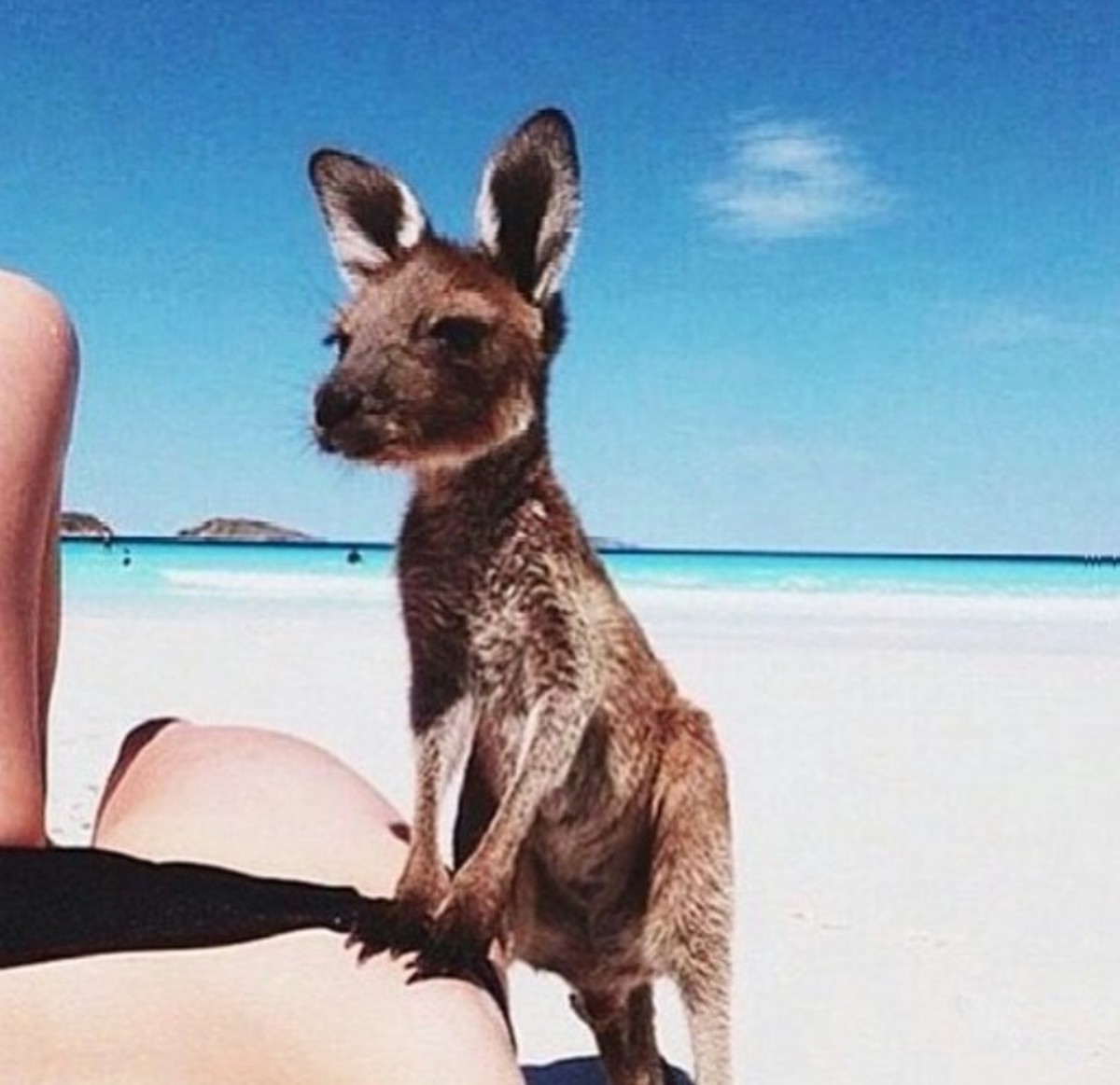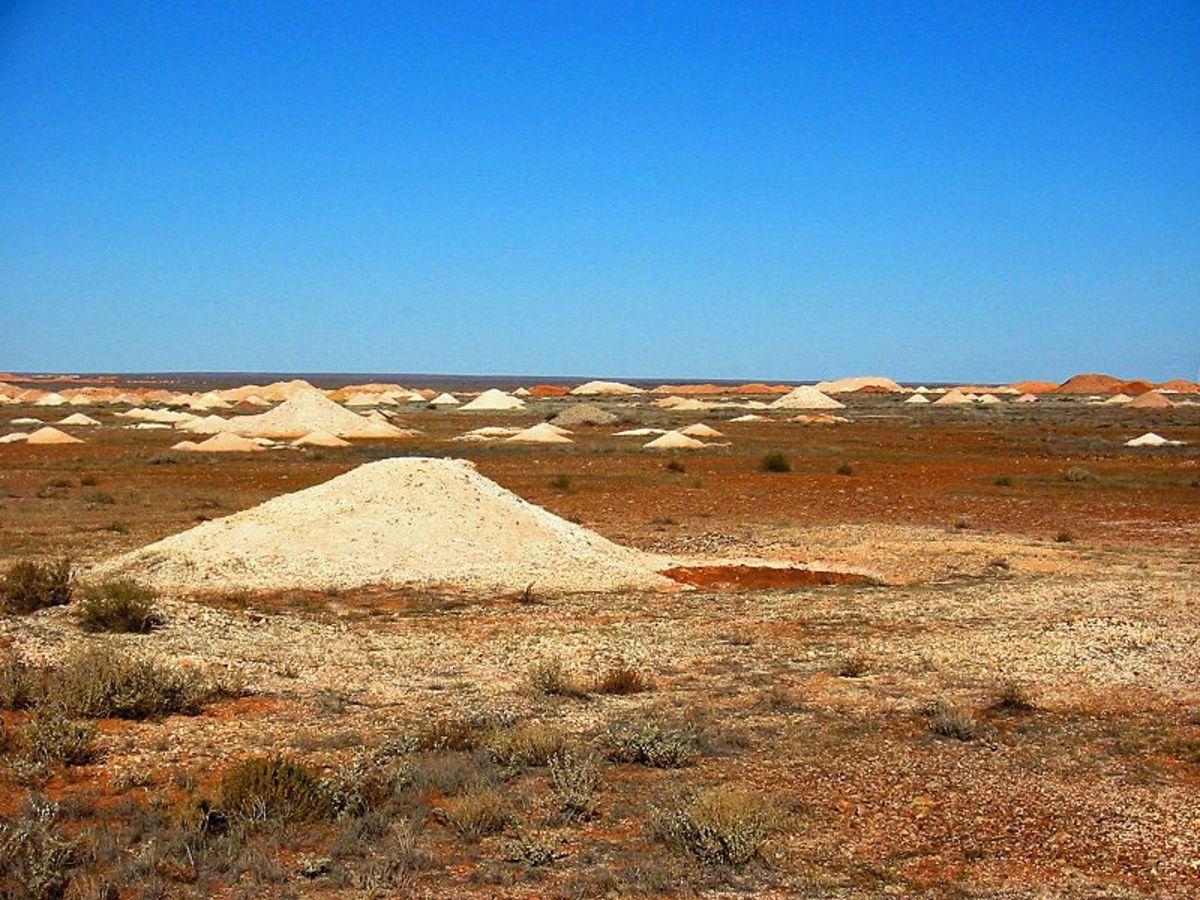On the Trail of the Tasmanian Tiger
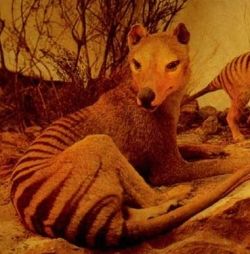
The Last Thylacine
The Tasmanian Tiger or Thylacine, is said to be extinct, but each year there are at least a dozen unconfirmed sightings in remote areas.
I've camped out at Pyengana, where many sightings have been reported. I've searched diligently for traces of thylacine, kept quiet and still in a hide by waterfalls for days on end but have not, as yet, seen any sign of this elusive creature.
One day I will see a Tasmanian Tiger. I feel this in my bones. But that could just be the aches from camping out in the damp.
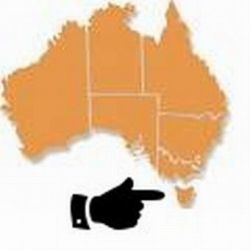
Where is Tasmania?
The most Southerly State in Australia
See the little island on the map? That's Tasmania. It's in the south towards Antarctica, and 240 kilometres (150 miles) from where I am, in Melbourne. It's a tiny little place, about the size of Ireland, Switzerland or West Virginia.
Tasmania is a wonderful, wild region. The natural environment is almost completely unspoiled, with over 40% of the island in National Parks and World Heritage Sites.
There are still parts of Tasmania where no European has ever been, so there's plenty of wilderness for a thylacine or two.
It's cold down here compared to the rest of Australia. Tasmania also includes the subantarctic Macquarie Island, which is part of the Huon Valley local government area.
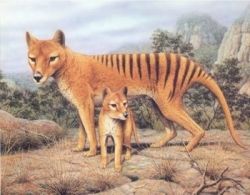
Slaughtered by Settlers - A Bounty for a Thylacine head
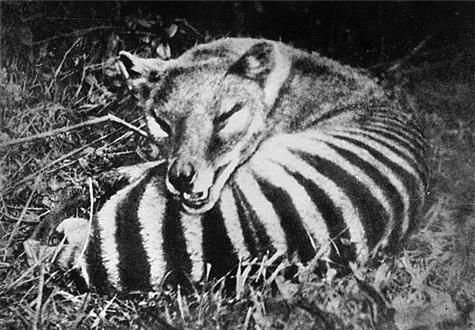
What's a thylacine?
A carnivorous marsupial mammal
Australia has a number of marsupial creatures. Koalas and kangaroos are the most familiar, but we have more of these strange marsupial mammals.
Marsupial mammals don't lay eggs, they give birth to live young. The newborn, essentially helpless embryos, then make an arduous climb into the mother's pouch. Once safely in that pouch they continue to develop, often for weeks or months.
The Thylacine was the largest known carnivorous marsupial of modern times. It's not a tiger at all, but a marsupial dog. Thylacines are relatives of kangaroos, they looked like a dog, and had stripes like a tiger
Thylacines are thought to have become extinct in the middle of the 20th century. When I say become extinct the poor creature was shot on sight by ignorant settlers.
In some parts of the world the thylacine is called the Tasmanian Wolf, but it's commonly known as the Tasmanian Tiger because of its striped back . The Tasmanians affectionately speak of the Tassie Tiger.
The Phantoms of Tasmania
Once Thylacines were widespread over mainland Australia, Tasmania, as well as in New Guinea.
Their range first declined because of competition from the Dingo but, when the Europeans arrived, thylacines were hunted, trapped and poisoned ruthlessly as potential killers of livestock.
The video shows photos of the last thylacine - if, indeed, it were the last one. I still hope to find one in Pyengana. Wish me luck!
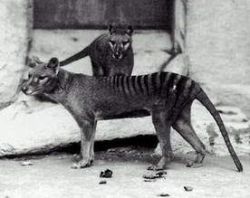
The Last Recorded Thylacine
But have they really all gone?
The last thylacine died in captivity in 1936 at the Hobart Zoo.
But since then more than 4000 sightings have been reported and many a reward (including a $1.25 million bounty for conclusive proof) has been offered.
Are the sightings valid? Can thylacines still be surviving in the deep Tasmanian forests? You have to keep in mind that, in the wild forests of the south among the mighty Huon Pines, there are still places where no European has yet set foot.
There's only one way to settle it - a live, uninjured animal must be produced!
Perhaps the best place to start is in North East Tasmania where Parks and Wildlife Service officers have reported sightings.
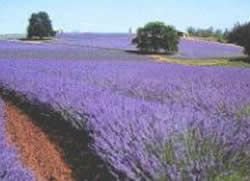
On the trail of the Thylacine
An enjoyable trip in itself
Take the Tasman Highway which connects Launceston with the eastern coast. A pleasant hour of driving brings you to Scottsdale, a friendly town in the heart of pastoral and forestry country.
Garden lovers come here to the Bridestowe Lavender Farm, especially during the summer in December and January.
Continue along the highway for another half an hour to reach Derby, an entire town which has been classified by the National Trust. Don't miss the Derby Tin Mine Centre. This is a charming little town and well known for art galleries and craft outlets nestling in the 19th century buildings.
To help you on the Tiger Trail
Pyengana
A place of quiet, serene beauty
Further down the Tasman Highway towards the coast is the tiny rural community of Pyengana. Here you will find the turn-off to the St Columbla Falls, dumping up to 200 000 litres of water over a ninety metre drop every minute.
This is a place of quiet, serene beauty, the silence broken only by the sound of the water and the cries of the Black-faced cuckoo-shrike.
This may be a good spot to wait and watch for a thylacine, in any case you're likely to be joined by wombats, wallabies and perhaps a Tasmanian devil. Good luck!
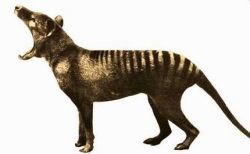
What to look for
You'll be sure to recognise a thylacine
The Tasmanian Tiger, Thylacinus cynocephalus, looked like a large, long dog, with stripes, a heavy stiff tail and a big head.
Fully grown it measured about 180 cm (6 ft) from nose to tail tip, stood about 58 cm (2 ft) high at the shoulder and weighed up to 30 kg.
The short, soft fur was brown with dark brown-black stripes that extended from the base of the tail to almost the shoulders.
And those jaws! A thylacine could routinely open up his jaws to an angle of 120 degrees - the same size as his head!
These days we don't have much chance to be frightened by those huge gaping jaws and powerful teeth for if any of these fascinating native creatures are left they are displaying remarkable good sense and hiding from us.
Hunted to extinction?
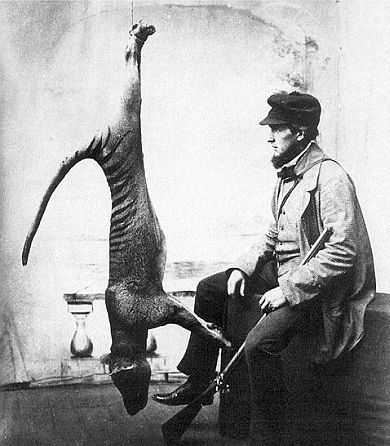
More on the Tasmanian Tiger
- The Thylacine Museum - A Natural History of the Tasmanian Tiger
An online museum dedicated to furthering public knowledge and interest in the thylacine or Tasmanian tiger, a carnivorous marsupial of Australia. - Tasmanian Tiger Footage (1932)
Thylacine. Video excerpt 1.30 minutes with curator notes. Also has educational notes. This clip chosen to be G - Research of the Australian Thylacine
Rex and Heather Gilroy have been searching the Australian bush for living proof that the 'extinct' Thylacine Thylacinus cynocephalus, still survives.
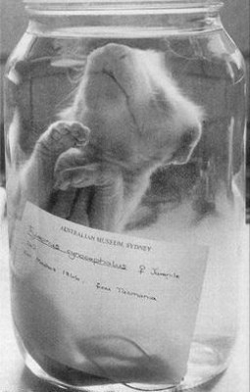
A Thylacine Clone?
Can it be done?
From a vault in Sydney's Australian Museum, a pickled Tasmanian tiger pup has brought the prospect of reviving an extinct species to the verge of reality, bringing mixed reactions of wonder and terror.
By chance this Thylacine was stored in a jar of alcohol rather than formalin, which would have destroyed the DNA.
Almost 80 years after Thylacine extinction, the museum has launched a project to clone the Tasmanian tiger.
For proponents, it's a chance to undo a terrible mistake that we have made, but for diehard critics, it's "playing God."
What do you think?
Cloning extinct animals - what do YOU think?
Should we clone extinct animals?
A better known Australian dog

The Dingo
Dingo, ancestor of all dog breeds - Wildlife Australia
The mother of all dingoes was most probably a single pregnant female. An intelligent animal, she trotted across the landbridge from Indonesia to Australia about 5,000 years ago and made a home for herself close to the people who inhabited the great Southern...
Could there be some thylacines left?
Is the Thylacine still living in the deep forests?
© 2008 Susanna Duffy


